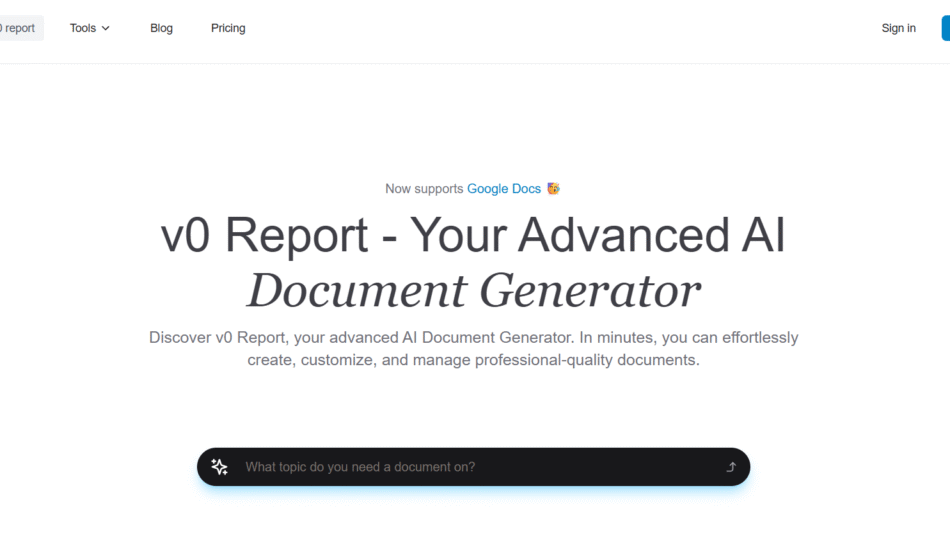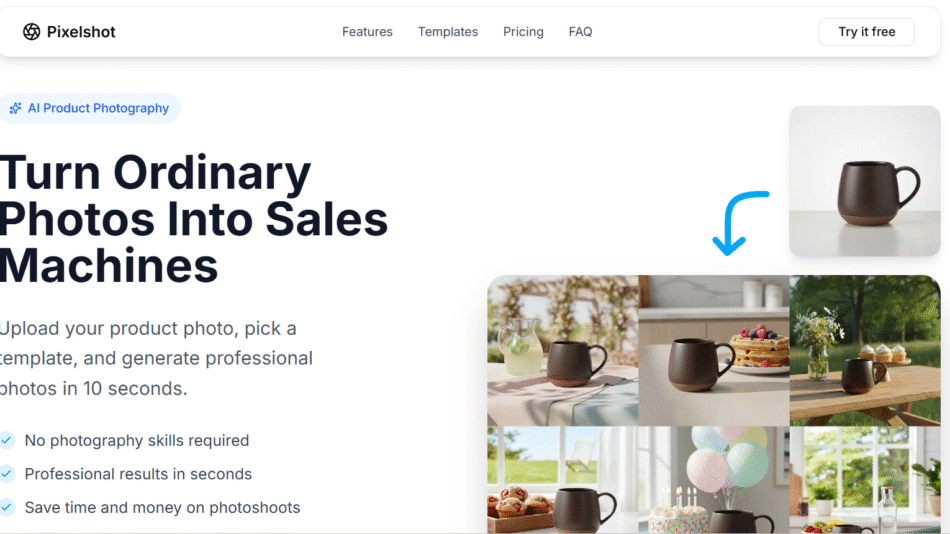Flowpoint.ai is an AI-powered website analytics platform designed to help businesses improve their website performance and user experience by identifying why users don’t convert. Unlike traditional analytics tools that focus on pageviews or traffic sources, Flowpoint leverages AI to deliver actionable insights about user behavior, conversion bottlenecks, and design flaws—so you can make informed decisions that drive growth.
Built for marketers, designers, and product teams, Flowpoint.ai tracks how users interact with your site in real time, detects anomalies, and highlights areas of friction that are hurting conversions. It also integrates with your existing tech stack, making it easy to turn insights into action.
Whether you’re optimizing a sales funnel, landing page, or onboarding flow, Flowpoint.ai helps you identify exactly what’s stopping visitors from becoming customers.
Features
1. AI-Powered Conversion Analysis
Automatically detect the points where users drop off or get confused, and receive AI-generated suggestions for improving funnel performance.
2. Real-Time Session Tracking
Monitor how users interact with your site in real time, including clicks, scrolls, time on page, and engagement depth.
3. Path and Funnel Visualization
Visualize the paths users take through your site to identify common journeys, roadblocks, and exit points.
4. Drop-Off Detection
Pinpoint exactly where users abandon the journey—whether on forms, checkout pages, or content sections—and receive recommendations on how to fix it.
5. Anomaly Alerts
Flowpoint’s AI detects unusual behavior patterns or traffic anomalies and alerts you, helping you respond to issues quickly.
6. Form Analytics
Understand how users interact with forms: where they hesitate, which fields they skip, and why they might abandon the process.
7. UX Insights
Get heatmaps, scroll maps, and engagement data that reveal whether design elements are effective or need improvement.
8. GDPR-Compliant Tracking
Flowpoint is built with privacy in mind and does not use cookies or collect personally identifiable information (PII), ensuring GDPR compliance.
9. Integrations
Connect Flowpoint with your existing platforms like Webflow, WordPress, Shopify, or React apps using a lightweight script.
How It Works
Step 1: Install Tracking Script
Add Flowpoint’s JavaScript snippet to your website. This lightweight code starts collecting user interaction data instantly.
Step 2: AI Analyzes User Behavior
Flowpoint uses machine learning to track user journeys, click behavior, and navigation patterns across your site.
Step 3: Identify Bottlenecks
AI detects points where users drop off or show signs of confusion, such as erratic clicks, repeated actions, or hesitation.
Step 4: Receive Optimization Suggestions
The system generates actionable tips for improving specific pages, elements, or funnel stages—such as simplifying forms or adjusting CTA placement.
Step 5: Monitor and Iterate
Track the impact of your changes over time and continue optimizing based on live data and continuous AI feedback.
This continuous feedback loop allows for ongoing optimization without the need for traditional A/B testing or complex user research.
Use Cases
1. SaaS Landing Page Optimization
Flowpoint helps SaaS businesses detect why users don’t sign up or convert, offering suggestions to improve form design and messaging.
2. E-Commerce Funnel Improvements
Identify where shoppers abandon carts or leave checkout flows, then test layout and content improvements to reduce friction.
3. Marketing Agency Client Reports
Agencies can use Flowpoint to generate reports that show their clients exactly where website performance can be improved.
4. Lead Generation Sites
Improve form completion rates and landing page engagement by understanding drop-off behavior in lead capture funnels.
5. Web Designers and UX Teams
Use Flowpoint’s real-time insights and UX feedback to validate design choices and prioritize website enhancements.
6. Product Onboarding Flows
Track where users get stuck during product sign-up or onboarding and make data-informed adjustments to improve retention.
Pricing
As of June 2025, Flowpoint.ai offers the following pricing plans:
Free Plan:
1 project
1,000 sessions/month
Basic insights
Standard tracking features
Pro Plan – $29/month:
3 projects
10,000 sessions/month
AI-generated suggestions
Funnel tracking
Conversion analysis
Business Plan – $79/month:
10 projects
50,000 sessions/month
Full analytics dashboard
Custom alerts
Priority email support
Enterprise Plan – Custom Pricing:
Unlimited projects and sessions
Team collaboration tools
White-label dashboards
Dedicated success manager
All plans include a 7-day free trial. Details and sign-up options are available at https://flowpoint.ai/pricing.
Strengths
AI-Powered Recommendations: Go beyond raw metrics with clear suggestions on how to improve conversions.
Real-Time Behavioral Data: See what users are doing on your site as it happens.
Privacy-First Analytics: No cookies or PII collection, making compliance easier.
Quick Setup: Lightweight script with no need for complex integration or backend changes.
Visual Insights: Funnel maps and behavior tracking help non-technical users understand what’s going wrong.
Affordable Entry-Level Pricing: Offers free and low-cost options for startups and small teams.
Drawbacks
Focused Scope: Flowpoint is built specifically for website behavior and conversion analytics—doesn’t include traffic sources or marketing attribution.
No Heatmap Exporting (as of now): Some users may want downloadable visual data for reporting purposes.
Limited Reporting Customization: Compared to enterprise analytics platforms, Flowpoint offers fewer customizable reporting features.
Still Growing Feature Set: Some features like mobile-specific tracking or deeper CRM integrations may be limited or in development.
Comparison with Other Tools
Flowpoint.ai vs. Hotjar:
Hotjar focuses more on heatmaps and session recordings, while Flowpoint emphasizes AI analysis and conversion optimization.
Flowpoint.ai vs. Google Analytics:
Google Analytics tracks site traffic and user demographics. Flowpoint focuses on behavior within funnels and offers improvement suggestions.
Flowpoint.ai vs. Crazy Egg:
Crazy Egg is more design-focused with scroll maps and A/B testing. Flowpoint adds AI-powered conversion insights without needing experimentation.
Flowpoint.ai vs. FullStory:
FullStory offers deep session replays and event logging for enterprise users. Flowpoint is more affordable and streamlined for conversion improvement.
Customer Reviews and Testimonials
Flowpoint.ai is praised by marketers, founders, and UX professionals for simplifying conversion optimization:
“With Flowpoint, we finally understood why people were abandoning our signup form—and fixed it.” – Co-founder, SaaS Startup
“The AI suggestions were spot-on. We increased demo signups by 23% after making just two changes.” – Marketing Lead, B2B Platform
“Other tools showed me what users did. Flowpoint told me what to fix.” – UX Designer
Early adopters appreciate the clarity, simplicity, and results-driven design of the platform, especially for growth-focused teams.
Conclusion
Flowpoint.ai stands out as a smart, AI-powered website analytics tool that doesn’t just tell you what users do—it tells you why they’re not converting and how to fix it. By combining behavioral tracking with machine learning, Flowpoint delivers actionable insights that are easy to understand and implement.
Whether you’re a marketer, startup founder, or web designer, Flowpoint offers an efficient way to optimize conversion funnels, improve UX, and grow your business—without hiring analysts or running dozens of A/B tests.















